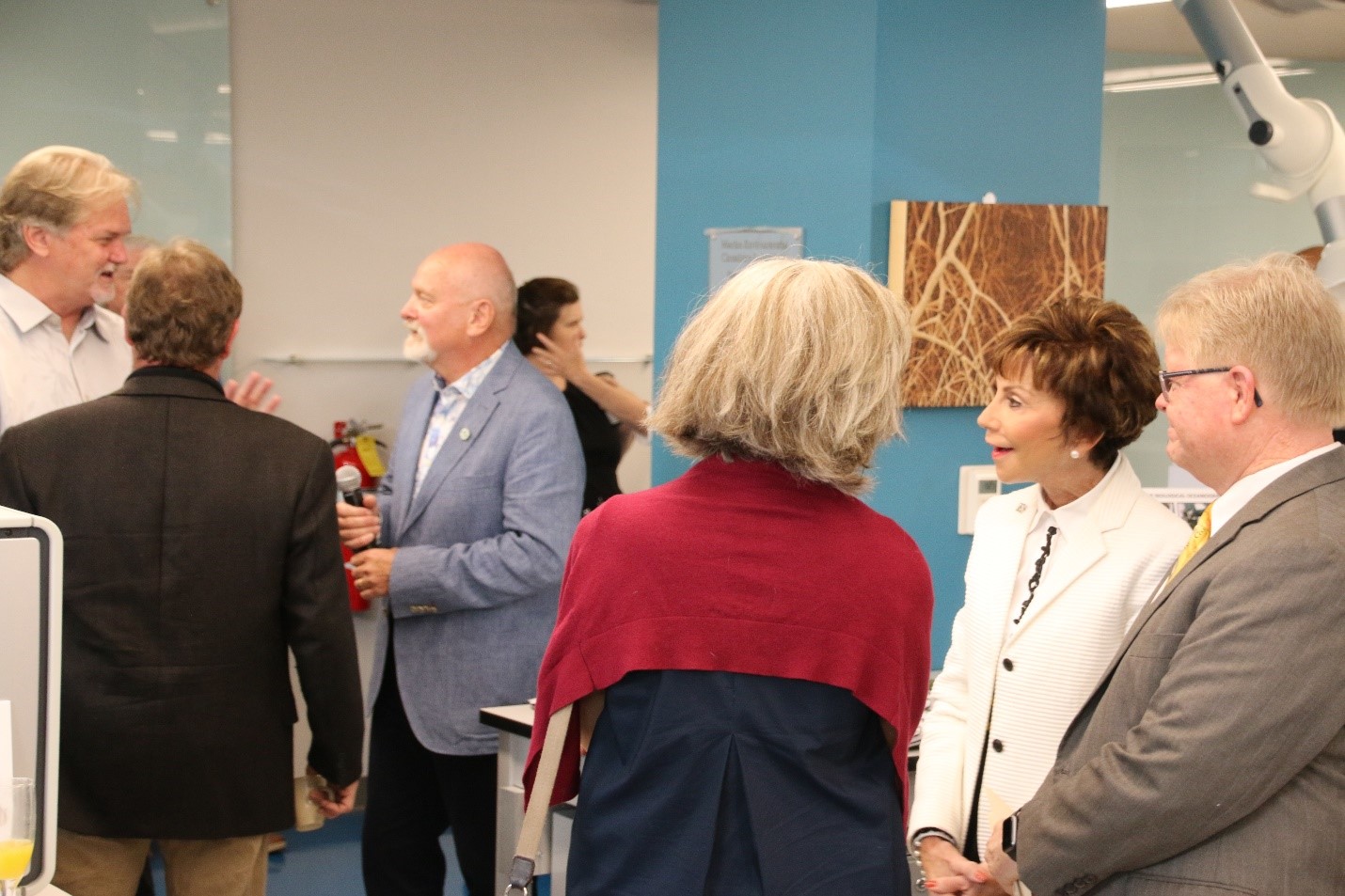Written by: PhD student Sean Beckwith
ST. PETERSBURG, FL – In a beautiful, new laboratory crowded with invited guests and high-tech instruments, Dr. Steve Murawski, professor of population and marine ecosystem dynamics, delivered some opening remarks and a brief history of the 80-year old building now called Marine Science Laboratory. What began in 1940 as a dormitory, complete with a mess hall and classrooms for the United States merchant marines, has since hosted multiple academic departments before becoming the home of USF’s College of Marine Science (USF CMS).
The crowd had gathered for the grand opening of the new Marine Environmental Chemistry Laboratory (MECL), a multi-room laboratory with a large, analytical instrumentation room, modern chemical hoods, and rooms across the hall for dry sample storage, freezer space and an industrial-sized sink and counter space for deconstructing samples and other materials brought in from oceanographic cruises.
Extensive renovations needed to produce the state of the art facility were the result of collaborations between Harvard Jolly Architecture, Willis Smith Construction, and staff and scientists from CMS. The architectural and construction team listened to the specific needs of the researchers, including faculty members David Hollander, Steve Murawski, Ernst Peebles, Brad Rosenheim, Amelia Shevenell, Tim Conway, Kristen Buck, Mya Breitbart, and Chris Stallings. Open lines of communication and room for suggestions allowed goals to become reality, producing a scientific facility that is immediately operational.
Other key players who made this dream a reality were on hand to join in celebrating the grand opening. Special acknowledgments were given to Joe Donnelly (CMS Facilities Manager), Suchi Daniels (USF Tampa, program manager), Kevin Hansen (USF Tampa, designer – “the Wave”), Ethan Goddard (Paleo Lab manager), Erin Pulster (Fish Toxicology Lab manager), and an especially big thanks to Sherryl Gilbert (user group coordinator) who was instrumental in all aspects of the project.
Several honored guests were in attendance, including USF President, Judy Genshaft, whose vision and interest were integral to the completion of the new lab. In a congratulatory speech, she thanked a long list of partners, including representatives of local government, the St. Pete Innovation District, USF system leaders (USF St. Petersburg Regional Chancellor, Martin Tadlock was on hand to appreciate the momentous occasion), and community partners – NOAA, USGS, TBEP, and Mote Marine Laboratory. She went on to speak about the skillful work of the architects and builders who “bring the facility to life” and brought the project to fruition.
Introducing President Genshaft and providing her own praise and words of encouragement during the opening speeches, the Dean of USF CMS, Dr. Jacqueline Dixon, stressed the shared-use aspect of the facility, which differs from the common scenario in which separate laboratories are designated for individual professors and their lab group, “This is not just a lab for one person. It’s not just a lab for two people. This is a joint-use facility for the University of South Florida to help in its continuation of preeminence in the state university system.”
Dr. Murawski, in his opening remarks, gave thanks to another very important group: the students, whose hard work and long hours in the laboratory are the backbone of the success of facilities like MECL.
The lab offers advanced instrumentation for geochemistry, toxicology and more. Devices already up and running employ High-Performance Liquid Chromatography, Gas Chromatography, Stable Isotope-Mass Spectrometry, and Spectrophotometry, with devices employing additional methods still to come.
This new facility creates a system of organization that places the most commonly sought-after instruments in a centralized, shared space and provides sample acquisition and storage features that will greatly streamline subsequent analyses and ease the process of referencing samples examined in the past.
